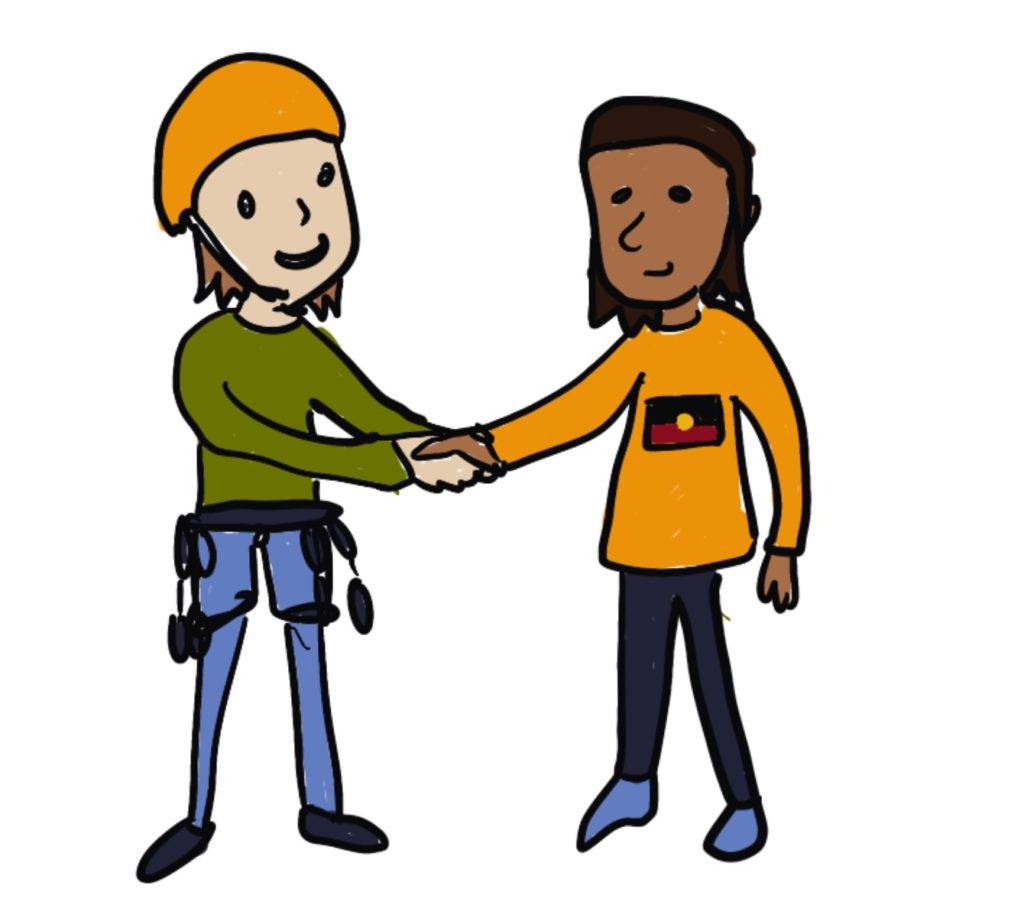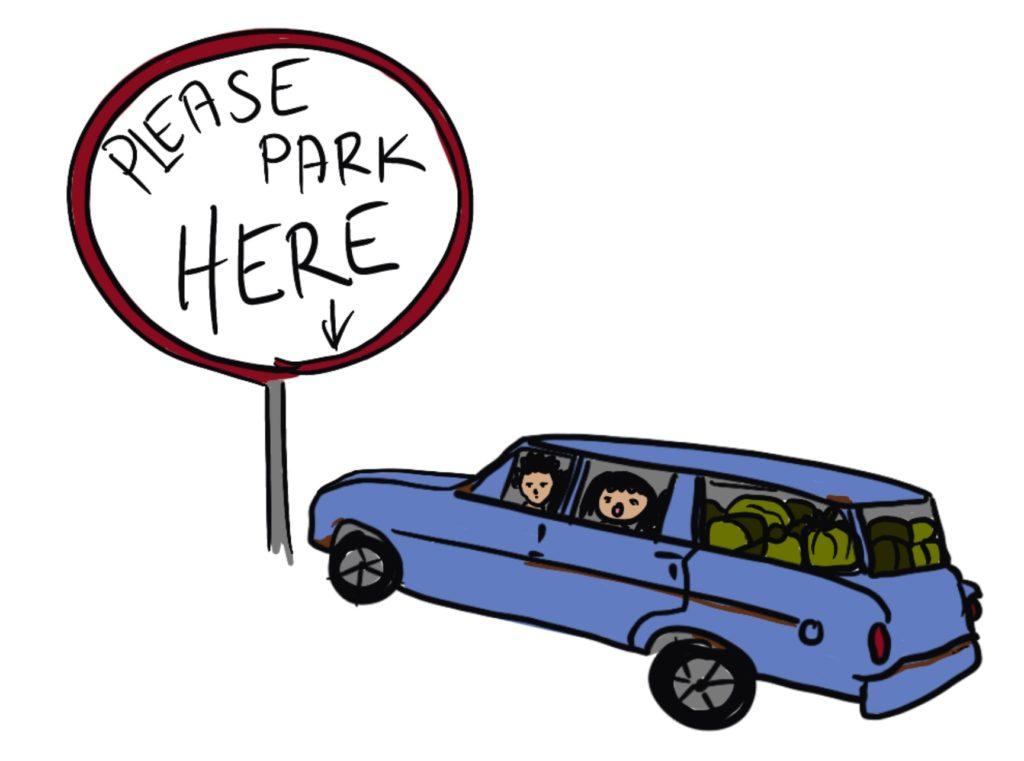Crags For The Next Generation
The “Outdoors” part of the UNSW Outdoors Club is so important. Everything we do is aimed at getting outside, even indoor training on plastic. Whether it be bikes, hikes, or climbs, everything we do also has an impact - social, cultural, and environmental.
Though UNSWOC members participate in a broad range of outdoors activities, climbing is one of the core activities of the club. As such, emerging access issues faced by the wider climbing community need to be addressed. This is particularly important because climbing is gaining momentum and the crusty old climbers are being replaced by climbers fresh out of the gym, many of whom do not have extensive outdoor experience and may not understand the ethics involved, such as Leave No Trace. It's incredibly important that we consider our impact and do what we can to minimise it.
This document is a collection of “best practice” guidelines for crag behaviour created after the ACANSW Conservation and Culture Forum. It contains:
- Minimising Impacts on First nations people
- Minimising Impacts on Environment
- Vegetation
- Fauna
- Chalk
- Waste
- And General Etiquette
Our Impact on First Nations:
Australia was not discovered. People lived here for thousands of years before the invasion of Western settlers. Sovereignty was never ceded. The places that we, as a club, enjoy and cherish were, and are still, the land of people that never consented to our use of their land. It was theirs before we were born, and always will be.
- When we are enjoying these incredible places, tread carefully. Be aware of the environment you are in and endeavour to understand the significance and stories of the places you visit.
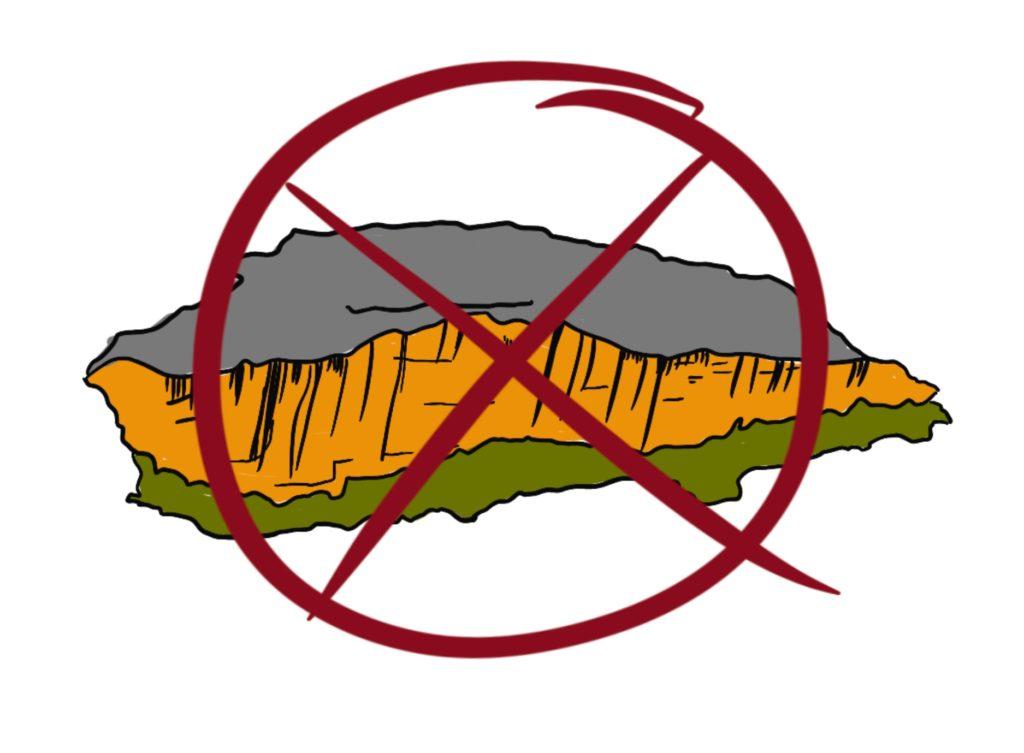
- Be respectful. Recognise that sometimes we will be told you cannot go to a place. If it doesn’t feel right, don't climb there (or engage in any other activity).
- Reach out and be welcoming by creating community, connection, and understanding.
Indigenous cultures do not separate humans and the environment but recognise us as an integral part of nature. It also means that every decision is made with cultural AND environmental considerationsin mind. When we are outside, consider making decisions for the greater good of culture and the environment for the next generation.
It is important to note that some areas we climb at are particularly sensitive to First Nations peoples, as many of the features that make a great climbing area also make that area culturally important for various reasons. When visiting areas known to be sensitive, extreme and particular care must be taken to ensure best practices. Do NOT climb at sites that are closed due to First Nations culture. To do so is selfish beyond belief, disrespectful towards the broader climbing community, and may lead to your club membership to be revoked. This includes:
- Closed areas of the Gariwerd (Grampians) and Djurrite (Arapiles) in victoria
- Closed routes at Thompson’s Point and other sensitive areas of Nowra
- Closed bouldering areas in the Shire
Environmental Impacts
Vegetation
- Be respectful of vegetation on climbs and around the base
In particular the areas at the bottom of the cliff that you are belaying and hanging out on. This involves carefully selecting where you drop your rope and gear, avoiding stepping on roots, using rock anchors when available and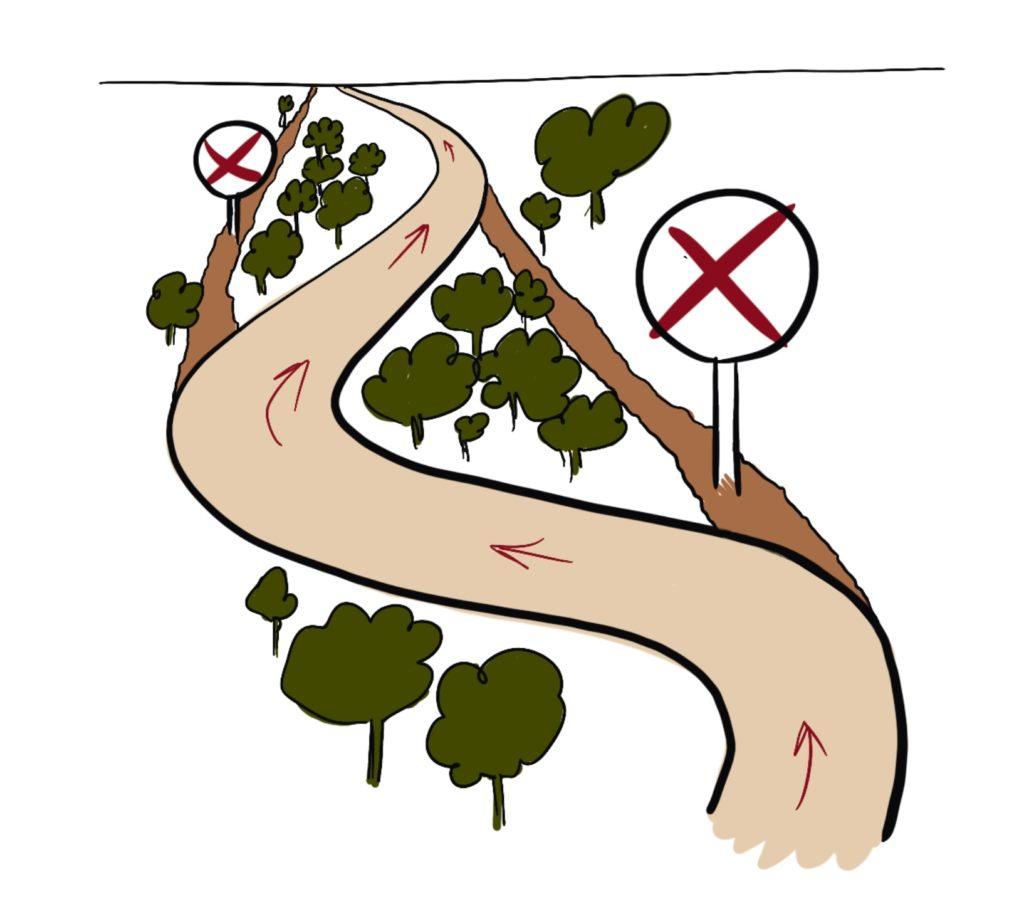 suitable instead of trees, and not damaging vegetation to get to a climb.
suitable instead of trees, and not damaging vegetation to get to a climb. - When walking into crags, follow the trail
Do not take shortcuts or create a new path. If there is no defined trail, form a single line of people, do not spread out and disturb a wider area (this is particularly important in burnt areas). - Invasive plants and fungus-like pests (particularly phytophthora) can extensively damage ecosystems. Unfortunately, climbers contribute to the spread of these pests by carrying seeds and other material on their climbing gear and shoes (e.g. a crag in the Blue Mountains, Farside, was closed due to the spread of phytophthora).
- To mitigate potential damage, avoid leaving dirt in your rope bag (good for your ropes too!) and clean your gear, especially shoes/boots after leaving the crag. You can do this by brushing your shoes when you get to the car and even better, spray them down with a disinfectant.
- Keep a lookout for plants. Put it on an app such as iNaturalist (or send it to someone who will know, like the club plant nerd) if you think it might be rare.
Fauna
There are many birds that live and nest around cliff faces and in the surrounding bush. The behaviour of nesting birds is strongly influenced by any human presence.
- If it's spring and you see a nest, move away from it and report it to the climbing community (through theCrag or Facebook climbing groups). Parents will not be able to come back to incubate eggs or feed young if humans are nearby.
- If you hear a bird call that you think could be an alarm or a territorial call, move away. In addition, if you see a bird with food in its mouth, move away. You may be near its nest and not realise (some birds are very good at camouflaging their nests) .
- If it’s peregrine falcon nesting season (usually August to November) and you see a nest, stay at least 50-100 m away. This includes the rock that you are climbing on. Being close can agitate parents or mean that the parents do not tend to their young. Peregrine falcons often nest along cliff lines in the Blue Mountains and Point Perpendicular, amongst other places. Sometimes cliff lines or particular climbs will be closed for this reason, so check theCrag before you go climbing (this has previously been the case for the Lighthouse area at Pt. Perp and Bardens Lookout). Birds of prey are very important in an ecosystem and it is crucial that we maintain their populations.
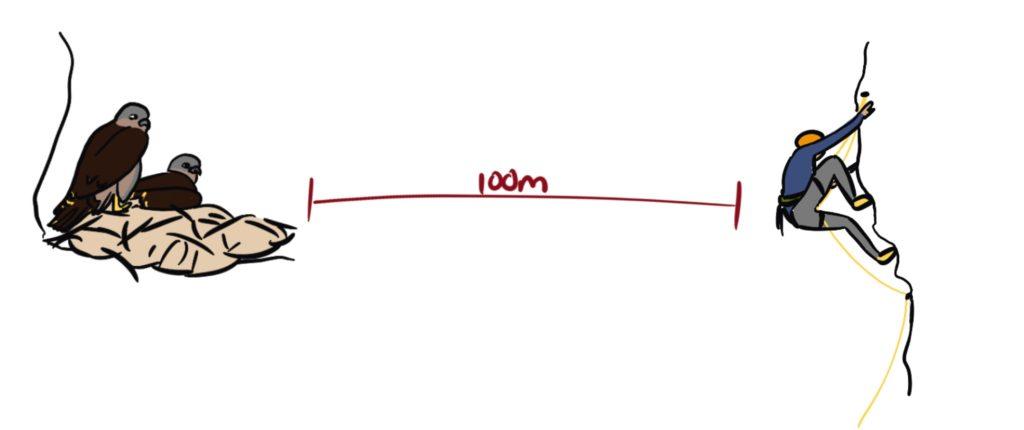
Waste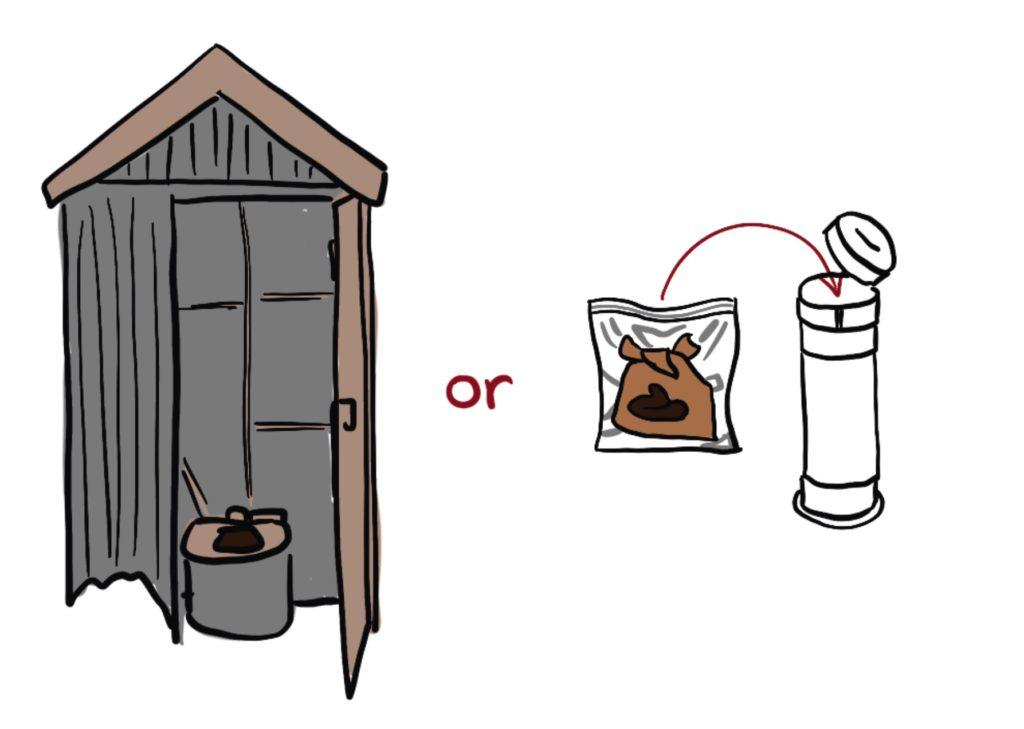
Along with the impact that our presence has on plants and animals, it's important to look at the direct impact we humans have. If in doubt, pack it out (as this follows Leave No Trace ethics):
- Use toilets before going on a trip.
- If you need to poop at a popular crag, in a canyon, in an alpine zone or in a cave, pack your poop out - see this infographic from the Access Fund. Wag bags (and other systems) are incredibly cheap and easy to use.If you’re in a cave or in an alpine environment, this is particularly essential as the poop may not degrade.
- If you can’t pack it out, and aren’t in one of the above environments, dig a proper hole - 100 m from water, at least 15 cm deep and don’t put any tampons or wet wipes in the hole.
- Do not leave food scraps around. This includes peels such as bananas and oranges. Not only is it unsightly, it also encourages animals to depend on humans for food, takes much longer than you think to break down in the dry Australian environment, and changes the nutritional balance of the soil drastically.
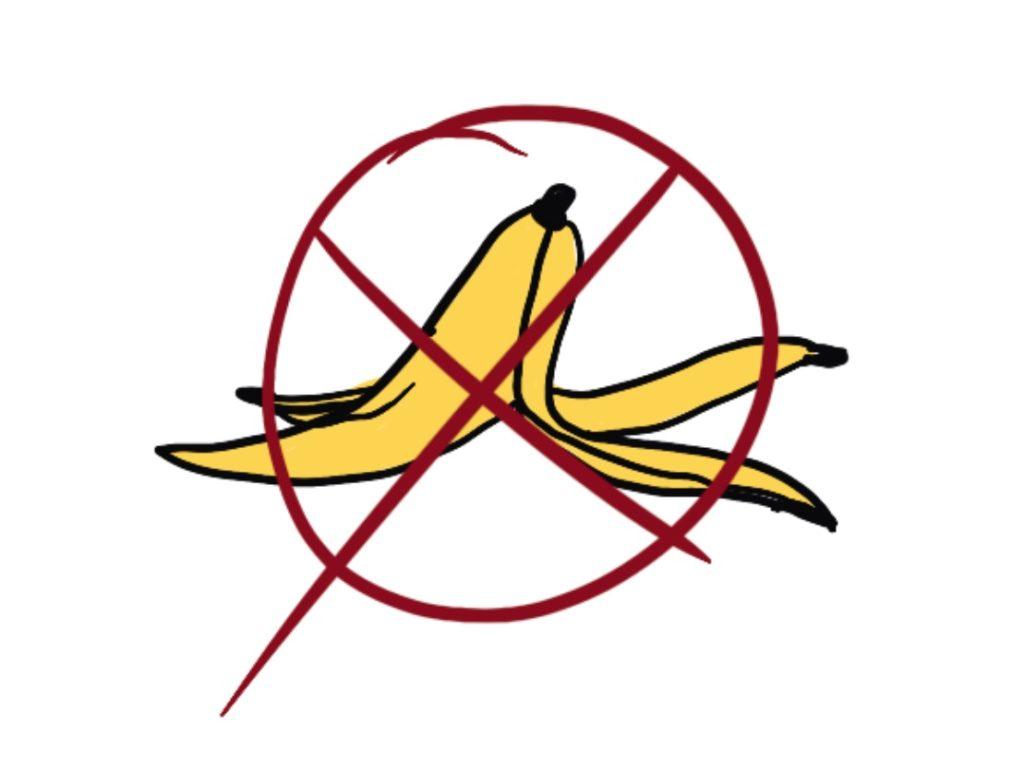
In summary, use the following practical guidelines for club trips
- Inform the participants of the toilet etiquette and encourage a toilet stop before starting the trip
- Inform the participants the trip is a “Leave No Trace” trip, meaning no waste (including organic food scraps and toilet paper) is left behind
- At the end of the day, encourage everyone to look out and pick any rubbish they can see.
Chalk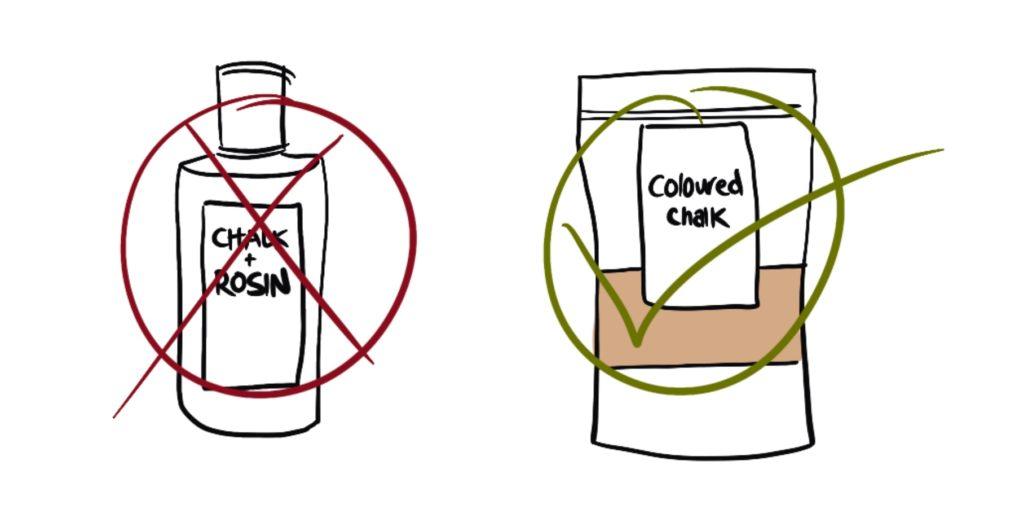
- Clean your chalk from any climbs you are on. At a minimum, bring a brush to the crag and clean the climb once you are done.
- Chalk stays for a long time on overhanging climbs or caves. Brushing may not be enough, so you can clean the chalk off using a spray bottle of water and a cloth. However, it is very important you only do this when you are certain there are no First Nations artefacts or objects beneath, and no-one else is climbing the route for a while.
- Do not use liquid chalk with rosin, otherwise called gum or POF. This will make holds sticky over time, and causes damage to the rock, degrading its strength.
- Consider using coloured chalk or environmental chalk.
General Etiquette
- Be nice to others, we want UNSWOC to be able to continue to do what we do. Be respectful kids.
- Do not play music at a crag if there are other people around (or ask first). If you are being loud, other climbers might find it hard to communicate which is very unsafe.
- Do not set up a bunch of top ropes and walk away, others might want those climbs.
- When setting up top-ropes near other groups, best practice is to greet them and offer to take down your ropes if they need a climb. MAKE IT CLEAR that they can approach you to ask, it stops people feeling like asking would be rude.
- Be aware that club trips are often the largest group at the crag, sometimes with many beginners. You are obvious and prominent, ensure best practice always.
- Try not to spread and sprawl your gear if there are other people around. Leave your gear off the path at the crag.
- In canyons, let small fast groups go ahead of you and consider sharing abseils when appropriate
- Be courteous to local residents and think about where you are parking. Try to encourage carpooling to limit cars. A full car park often means a full crag, consider going to another location.
- If the crag has more climbing space than parking, don’t be afraid to park on another street and walk in, especially in areas with limited parking.
- At places like Elanora Heights or Medlow Bath ensure you follow parking instructions on TheCrag. Access is no accident, and failure to observe these recommendations could result in crag closure.
- Always check TheCrag.com for access, parking, and updates.
- Appropriate planning and preparation will drastically reduce the likelihood of needing emergency assistance. Always research approach, route, and descent information before departing for crag. Always tell someone where you are going and when you will return.
- Don't climb on damp or wet rock. Sandstone is particularly fragile when wet.
- Be aware of winter days being shorter and cold at night. Try to climb and hike earlier in the day and be prepared for climbing/walking out in the dark. Always bring headtorches, and ensure there are enough for the entire group before starting.
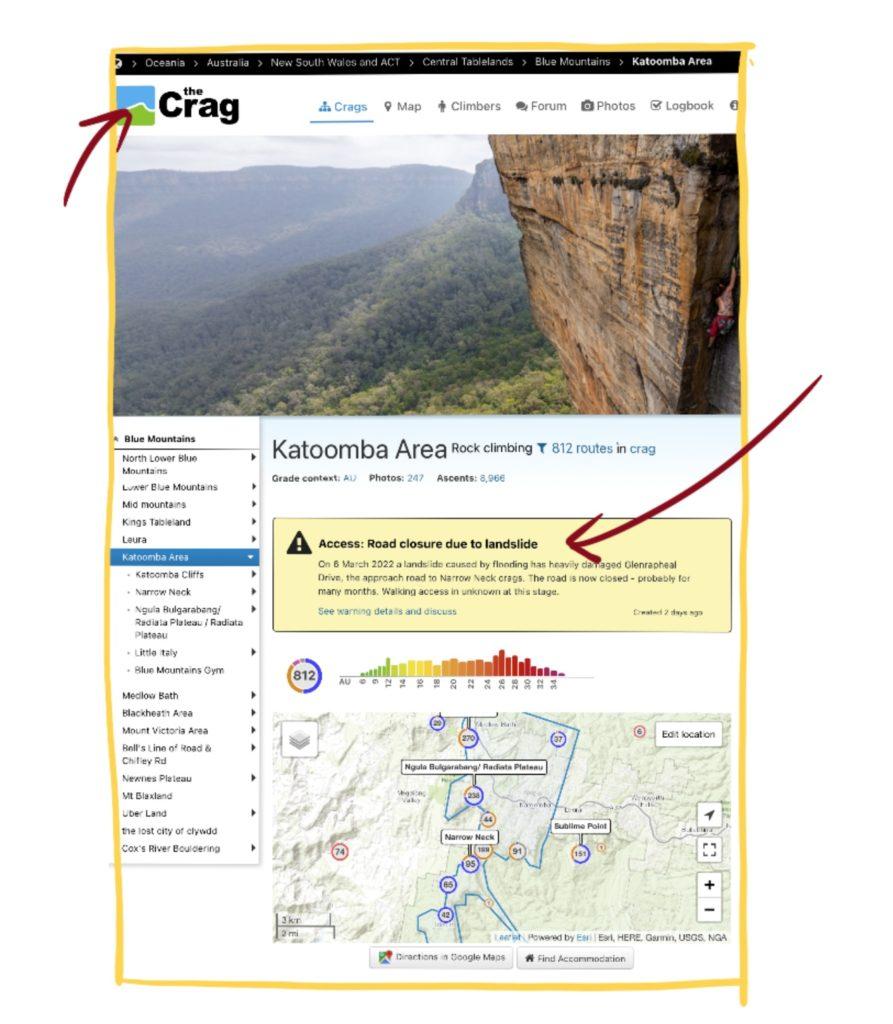
Remember that access is no accident, and as avid users of the outdoors we are responsible for preserving these places for future generations. Laziness, ignorance, or selfishness can result in permanent environmental damage, which will subsequently lead to land and access closures. It is our responsibility to ensure that we follow best practices to ensure access continues in the future.
And as a final note: remember if you see something you can (respectfully) speak up! Working together and educating ourselves and others is key to looking after our outdoor spaces for the next generations.
 Written by Mira, Abi, Nic Di Campli, Maria and Daisy 2021/2022
Written by Mira, Abi, Nic Di Campli, Maria and Daisy 2021/2022




